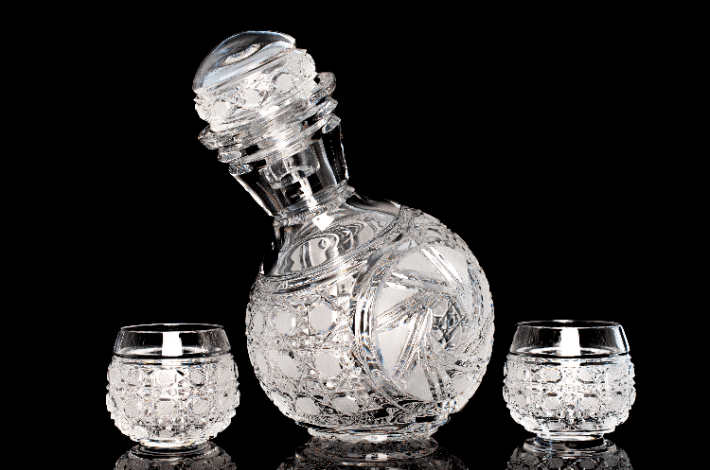Vintage Glassware: A Legacy Of Craftsmanship And History
Exploring the Timeless Elegance and Artistry of Antique Glassware

Have you ever held a piece of vintage glassware in your hands, wondering how it came into being? The intricate designs and impeccable craftsmanship must’ve left you awestruck, but it is even more fascinating when you learn about its heritage.
Today, we’re going to venture into the world of vintage glassware. In this place, art fuses with function, and history amalgamates with creativity. Are you ready to dive into this beautiful journey deep into the history of glass-making artisans and their timeless creations?
Having a beautiful piece of vintage glassware in your home is more than owning just a decorative item; it’s like possessing a fragment of history. Using such pieces for common household chores makes the mundane tasks seem more exciting and embeds a sense of purpose into our lives.
Are you curious about how these beautifully crafted glass pieces have survived through the years and how artisans once created such intricate designs without today’s advanced tools?
From the rustic charm of Depression-era glassware to the elegance of mid-century Murano pieces, vintage glassware has a lot to narrate. This blog post will explore the intriguing journey of vintage glassware Melbourne, its genesis, evolution, craftsmanship, and its place in contemporary living.
The Ancient Origins
A glance at vintage glassware may lead you to think it’s a recent discovery, but the art of glass-making dates back thousands of years. The Egyptians were at the forefront, expertly molding and crafting beautiful glass items as early as 1500 BC.
Glass-making was a coveted craft passed down through generations. So much so that Roman natural philosopher Pliny the Elder suggested that glass was discovered accidentally by Phoenician sailors. Regardless of its controversial beginnings, vintage glassware Melbourne is undeniably a marvel of ancient craftsmanship.
Moving ahead, the lack of sophisticated tools didn’t deter these artisans. Instead, they learned to perfect the art of glassblowing and mold-making, resulting in an array of distinctive designs. The colors, shapes, and styles varied from region to region – leaving a lasting legacy of cultural distinction.
The Famed Artisans
Over time, specific regions gained fame for their unique styles of glass-making. Murano, a tiny island in Venice, Italy, became synonymous with elegant glass artistry. The glassblowers of Murano were so well-regarded that they were practically held captive on the island — a testament to their undeniable skills.
Bohemian glass, from regions of the modern Czech Republic, was equally revered for its sharp cuts and brilliant colors. Crystal glassware from Ireland became similarly famous, promising the highest quality and intricate designs.
More region-based styles evolved, each distinguishing itself with a specific signature style, ushering in an era of specialized glass artisans transmitting their craft across time.
The Evolution of Design and Craftsmanship
The designs of vintage glassware evolved through the years, reflecting changes in societal tastes and styles. During the Depression era, everyday utility glassware was produced in abundance and offered in bright colors, adding a splash of joy to otherwise grim times.
In the mid-century, following World War II, designs took a sleek turn, aligning with the clean lines and minimalist aesthetics of the period. Pieces incorporated abstract patterns, geometric shapes, and the use of metallics.
Today, vintage glassware designs continue to influence contemporary glass artistry, offering a perfect combination of old-world charm and modern aesthetics.
The Market for Vintage Glassware Today
The market for vintage glassware has seen a resurgence in recent years. Collectors marvel at the intricate craftsmanship of these pieces and appreciate the rich history they represent. Whether it’s a goblet from the bygone era or a colored vase from the Victorian age, these pieces serve as timeless reminders of a golden era.
The Artful Home Decor
Vintage glassware effortlessly adds a touch of class and intrigue to your home decor. Whether arranged on a bookshelf, as table centerpieces or displayed compellingly in a cabinet, these pieces stand out.
They hold the power to transform a space, add warmth, and tell stories of craftsmanship and times gone by. What’s more, they offer a creative way to blend traditional and contemporary decor, embodying a cozy yet chic ambiance.
Caring for Your Vintage Glass Pieces
Proper care can prolong the lifespan of your vintage glassware in Melbourne. Use lukewarm water and mild dish detergent for cleaning, and always dry with a soft cloth. Avoid using abrasive cleaners or brushes, which can scratch the delicate surface.
Despite the fragile nature of glass, these vintage pieces have stood the test of time, and with a bit of love and care, they’ll continue to enhance your spaces and delight the senses for many more years to come.
Conclusion: Celebrating the Legacy of Vintage Glassware
Embracing vintage glassware is about celebrating a rich legacy of craftsmanship. These beautiful pieces are not just decorative; they are part of our shared heritage and a testament to the artists who once dedicated their skills to creating them.
With their resurfacing popularity, vintage glass pieces are more than sought-after collectibles or stylish accents; they carry historical charm that transforms spaces and kindles conversations. They embody the essence of timeless beauty, carving a niche in the hearts of art lovers, collectors, and home decor enthusiasts.
As we move forward, the spotlight on vintage glassware shines brighter than ever, revealing the intricate work of long-ago artists, their regional stylings, and the evolution of design through the ages. It’s more than just a fad – it’s a fascination, a connection, and a tribute to our artistic history. So, the next time you hold a piece of vintage glassware in Melbourne, remember, you’re having a piece of history.





